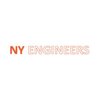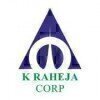Hvac Engineer
70+ Hvac Engineer Interview Questions and Answers

Asked in SAI Life Sciences

Q. What are the various gauges of ducting, and which size uses which gauge?
The gauge of ducting refers to its thickness and is determined based on the size and application of the duct.
The gauge of ducting ranges from 10 to 30, with lower numbers indicating thicker ducts.
The size of the duct determines the gauge to be used. Larger ducts generally require thicker gauges for structural integrity.
For example, a small residential HVAC system may use 24-gauge ducts, while a large commercial system may require 16-gauge ducts.
The gauge of ducting affects it...read more

Asked in SAI Life Sciences

Q. As per guide line's revit and nut and bolt sizes in angle frame
The question is asking about the guidelines for Revit and nut and bolt sizes in angle frame for HVAC engineering.
Revit is a software used for building information modeling (BIM) in HVAC engineering.
Guidelines for Revit include standards for modeling, annotation, and documentation.
Nut and bolt sizes in angle frame refer to the specific dimensions and types of fasteners used in constructing angle frames for HVAC systems.
These sizes may vary depending on the load requirements, m...read more
Hvac Engineer Interview Questions and Answers for Freshers

Asked in Sayaji Industries

Q. What is the quality circle method for problem-solving techniques?
Quality circle method is a problem-solving technique that involves a group of employees working together to identify, analyze, and solve work-related issues.
Involves a group of employees working together
Focuses on identifying, analyzing, and solving work-related issues
Encourages employee participation and collaboration
Uses brainstorming sessions and data analysis to come up with solutions
Promotes continuous improvement and employee empowerment

Asked in SAI Life Sciences

Q. What type of filters are used in AHUs and plenums?
Different types of filters can be used in AHUs and plenums depending on the specific requirements.
Fiberglass filters are commonly used in residential and commercial buildings.
Pleated filters have a larger surface area and can capture smaller particles.
HEPA filters are highly efficient and can capture particles as small as 0.3 microns.
Activated carbon filters can remove odors and chemicals from the air.
Electrostatic filters use an electric charge to attract and capture particl...read more

Asked in NYEI Design Services

Q. In what scenarios is latent heat considered more significant than sensible heat in heat load calculations?
Latent heat is crucial in scenarios involving moisture, phase changes, and humidity control in HVAC systems.
In spaces with high humidity, such as swimming pools, latent heat from moisture removal is significant.
During cooling processes, like air conditioning, latent heat affects comfort by removing humidity from the air.
In industrial applications, processes like drying or distillation involve significant latent heat changes.
In food processing, maintaining specific humidity le...read more

Asked in SAI Life Sciences

Q. What is infiltration and exfiltration?
Infiltration and exfiltration are terms used in HVAC engineering to describe the movement of air into and out of a building.
Infiltration refers to the unintentional or uncontrolled flow of outdoor air into a building through cracks, gaps, or openings in the building envelope.
Exfiltration, on the other hand, is the opposite of infiltration and refers to the unintentional or uncontrolled flow of indoor air out of a building.
Both infiltration and exfiltration can have a signific...read more
Hvac Engineer Jobs




Asked in NYEI Design Services

Q. What criteria should be considered when selecting a VRV/VRF system and determining their control wiring?
Selecting a VRV/VRF system involves evaluating efficiency, capacity, control options, and installation requirements.
Energy Efficiency: Look for systems with high SEER ratings to reduce operational costs.
Capacity Requirements: Calculate the heating and cooling loads to ensure the system meets building demands.
Control Options: Consider advanced control systems that allow for zoning and remote management, such as smart thermostats.
Installation Complexity: Assess the ease of inst...read more

Asked in Cipla

Q. Is this sanitizer bottle a tool or a machine?
The sanitizer bottle is a tool.
A tool is a device used to perform a specific task.
The sanitizer bottle is used to dispense sanitizer.
It does not have any moving parts or complex mechanisms.
It is a simple tool that can be operated by hand.
Share interview questions and help millions of jobseekers 🌟


Asked in Al-Yamama Group

Q. Do you have any experience with heat load installation and maintenance in HVAC systems?
I have extensive experience in heat load calculations and HVAC system maintenance, ensuring optimal performance and energy efficiency.
Conducted heat load calculations using software like Manual J to determine system requirements for residential projects.
Performed regular maintenance on HVAC systems, including cleaning coils and checking refrigerant levels to ensure efficiency.
Implemented energy-saving measures based on heat load analysis, resulting in a 15% reduction in energ...read more

Asked in NYEI Design Services

Q. What are the different types of ducts and the methods used for duct design?
Ducts are essential for HVAC systems, varying in types and design methods to optimize airflow and efficiency.
Types of ducts include: rectangular, round, and oval.
Rectangular ducts are space-efficient and easy to install in tight spaces.
Round ducts are preferred for their aerodynamic efficiency and lower pressure loss.
Oval ducts combine benefits of both rectangular and round, suitable for low-clearance areas.
Duct design methods include: constant air volume (CAV), variable air ...read more

Asked in NYEI Design Services

Q. What code is utilized for ventilation calculations, and what are the comfort design conditions?
Ventilation calculations often use ASHRAE standards, focusing on comfort conditions like temperature and humidity.
ASHRAE Standard 62.1 is commonly used for ventilation calculations in commercial buildings.
Comfort design conditions typically include indoor temperature ranges of 68-75°F in winter and 72-78°F in summer.
Relative humidity levels should ideally be maintained between 30-60% for comfort.
Ventilation rates can be calculated based on occupancy, space type, and activity ...read more

Asked in NYEI Design Services

Q. What is the procedure for using xref in MEP coordination drawings?
Using xrefs in MEP coordination drawings helps integrate multiple disciplines efficiently.
1. Create a base drawing: Start with a base drawing that includes the architectural layout.
2. Attach xrefs: Use the 'Attach' command to link other discipline drawings (e.g., structural, electrical) as xrefs.
3. Manage visibility: Control the visibility of xrefs to focus on specific systems during coordination.
4. Update xrefs: Regularly update xrefs to reflect the latest changes from other...read more

Asked in SAI Life Sciences

Q. What is the efficiency of H13 and H14 filters?
H13 and H14 are high-efficiency particulate air (HEPA) filters used in HVAC systems.
H13 filters can capture 99.95% of particles as small as 0.3 microns.
H14 filters can capture 99.995% of particles as small as 0.3 microns.
Both filters are commonly used in hospitals, cleanrooms, and other environments where air quality is critical.
The efficiency of these filters can vary depending on factors such as airflow rate and particle size distribution.
Asked in Advanced Building Solutions

Q. What micron level should be reached when vacuuming an HVAC system before commissioning?
The vacuuming process for an HVAC system should reach a level of 500 microns before commissioning.
The recommended micron level for vacuuming an HVAC system before commissioning is 500 microns.
This level ensures that the system is free of contaminants and moisture, which can affect its performance.
Using a high-quality vacuum pump and proper techniques is essential to achieve this level of vacuum.
Regularly checking the micron level during the vacuuming process is important to e...read more

Asked in Zamil Air Conditioners

Q. Types of chiller types of AHU and also types of maintenance
Chiller types include air-cooled, water-cooled, and absorption chillers. AHU types include single-zone, multi-zone, and variable air volume units. Maintenance includes preventive, predictive, and reactive maintenance.
Chiller types: air-cooled, water-cooled, absorption
AHU types: single-zone, multi-zone, variable air volume
Maintenance types: preventive, predictive, reactive

Asked in Sayaji Industries

Q. What is Refrigerator &Refrigeration
Refrigeration is the process of removing heat from a space to lower its temperature, commonly used in refrigerators to preserve food.
Refrigeration involves the transfer of heat from a low-temperature space to a high-temperature space.
Refrigerators use refrigeration to keep food cold and prevent spoilage.
Common refrigerants used in refrigeration systems include Freon, ammonia, and carbon dioxide.

Asked in Sayaji Industries

Q. Which part of the refrigeration cycle...?
The part in the refrigeration cycle responsible for absorbing heat from the indoor air is the evaporator coil.
Evaporator coil is located inside the indoor unit of the HVAC system.
It contains refrigerant that evaporates as it absorbs heat from the indoor air.
The evaporator coil is where the cooling process begins in the refrigeration cycle.
Once the refrigerant absorbs heat, it is sent to the compressor for further processing.

Asked in HVAX Technologies Limited

Q. What do you know about HVAC systems in the pharmaceutical industry?
HVAC in Pharma refers to the heating, ventilation, and air conditioning systems used in pharmaceutical facilities.
HVAC systems in pharma are designed to maintain specific temperature, humidity, and air quality levels to ensure product integrity and safety.
Cleanrooms in pharma require specialized HVAC systems to control particulate matter and prevent contamination.
Pharmaceutical HVAC systems often incorporate features like HEPA filters, airlocks, and pressure differentials.
Tem...read more

Asked in Al-Yamama Group

Q. How many years of experience do you have in HVAC?
I have over 5 years of experience in HVAC, specializing in system design, installation, and maintenance for residential and commercial projects.
Worked on HVAC system installations for over 50 residential homes, ensuring energy efficiency and compliance with local codes.
Led a team in retrofitting an old commercial building with a new HVAC system, improving energy consumption by 30%.
Conducted regular maintenance checks and troubleshooting for various HVAC systems, reducing down...read more

Asked in Ferring Pharmaceuticals

Q. How do you maintain the differential pressure of an area?
Maintain differential pressure by adjusting airflow, sealing leaks, and monitoring equipment.
Adjust airflow using dampers or variable frequency drives to balance pressure
Seal leaks in ductwork or building envelope to prevent pressure loss
Monitor equipment regularly to ensure proper functioning and make adjustments as needed
Asked in Abhir Aircon Systems

Q. Describe your experience with AutoCAD design and drafting of VRF piping.
AutoCAD design for VRF piping involves precise drafting for efficient HVAC system layout and installation.
Understand the VRF system components: indoor units, outdoor units, and piping connections.
Use AutoCAD to create detailed layouts, ensuring proper spacing and accessibility for maintenance.
Incorporate accurate dimensions and annotations for piping sizes, insulation, and support brackets.
Utilize layers in AutoCAD to differentiate between various system components and piping...read more

Asked in Special Technical Services

Q. What are chillers and their components?
Chillers are HVAC systems that remove heat from a liquid via a vapor-compression or absorption refrigeration cycle.
Chillers are used to cool large commercial or industrial spaces.
They consist of several components including compressors, condensers, evaporators, and expansion valves.
Compressors are responsible for compressing the refrigerant gas.
Condensers transfer heat from the refrigerant to the cooling medium (air or water).
Evaporators absorb heat from the space being coole...read more

Asked in Dr. Reddy's

Q. Hvac validation Hvac diffrential process monitoring Designing of hvac
Hvac validation involves ensuring that the heating, ventilation, and air conditioning systems meet required standards and specifications.
Hvac validation involves testing and verifying that the system operates correctly and efficiently.
Hvac differential process monitoring involves monitoring temperature, pressure, and airflow differentials to ensure proper functioning.
Designing of Hvac systems involves creating layouts, selecting equipment, and determining optimal placement fo...read more
Asked in Continental Projects

Q. All types of HVAC equipment handled
Yes, I have experience in handling all types of HVAC equipment.
I have experience in handling air conditioning units, boilers, chillers, heat pumps, and ventilation systems.
I am familiar with both commercial and residential HVAC systems.
I have worked with various brands and models of HVAC equipment.
I am knowledgeable in troubleshooting and repairing HVAC equipment.
I am up-to-date with the latest HVAC technologies and industry standards.

Asked in Sayaji Industries

Q. What are the different types of chillers?
A type of chiller commonly used in HVAC systems is the centrifugal chiller.
Centrifugal chillers use the principle of centrifugal force to cool water or air.
They are typically used in large commercial buildings or industrial facilities.
Examples of centrifugal chillers include Trane CenTraVac and Carrier AquaEdge.

Asked in Blue Star

Q. What is the refrigeration cycle?
Refrigeration cycle is a process in which a refrigerant absorbs heat from a low-temperature area and releases it in a high-temperature area.
Refrigerant absorbs heat from the evaporator coil and evaporates into a gas
The compressor then compresses the gas, raising its temperature and pressure
The hot gas flows through the condenser coil, releasing heat and condensing back into a liquid
The liquid refrigerant passes through the expansion valve, where it expands and cools down befo...read more

Asked in Zydus Lifesciences

Q. How do you check the functionality of a fire damper?
Fire damper can be checked by visual inspection, drop test, and airflow test.
Inspect for any visible damage or obstruction
Perform a drop test to ensure the damper closes properly
Conduct an airflow test to verify the damper's ability to restrict airflow
Check the damper's label for installation date and maintenance schedule
Record the results of the inspection and tests in a logbook

Asked in HVAX Technologies Limited

Q. What is your manpower handling capacity on site?
The manpower handling capacity on site depends on various factors such as project size, complexity, and available resources.
The number of workers required for a project depends on the size and complexity of the project.
The availability of resources such as equipment and materials also affects the manpower handling capacity.
Effective communication and coordination among team members can improve the efficiency of manpower handling.
Proper planning and scheduling can help in opti...read more

Asked in Universal Voltas LLC

Q. Energy Efficiency Ratio, Integrated Part Load Value of Chiller.
Energy Efficiency Ratio (EER) and Integrated Part Load Value (IPLV) are important metrics used to measure the efficiency of chillers.
EER is the ratio of cooling output to the electrical power input of a chiller at a specific operating condition.
IPLV is an average efficiency value calculated at various part load conditions, representing the chiller's performance over a typical operating cycle.
Both EER and IPLV help in comparing the energy efficiency of different chillers and s...read more

Asked in Zeta

Q. How do you select a pump?
Selecting a pump involves considering factors like flow rate, head pressure, efficiency, and system requirements.
Determine the required flow rate for the system
Calculate the head pressure needed to overcome friction and elevation changes
Consider the efficiency of the pump to minimize energy consumption
Select a pump that meets the system requirements and is compatible with the fluid being pumped
Interview Questions of Similar Designations
Interview Experiences of Popular Companies








Reviews
Interviews
Salaries
Users

















